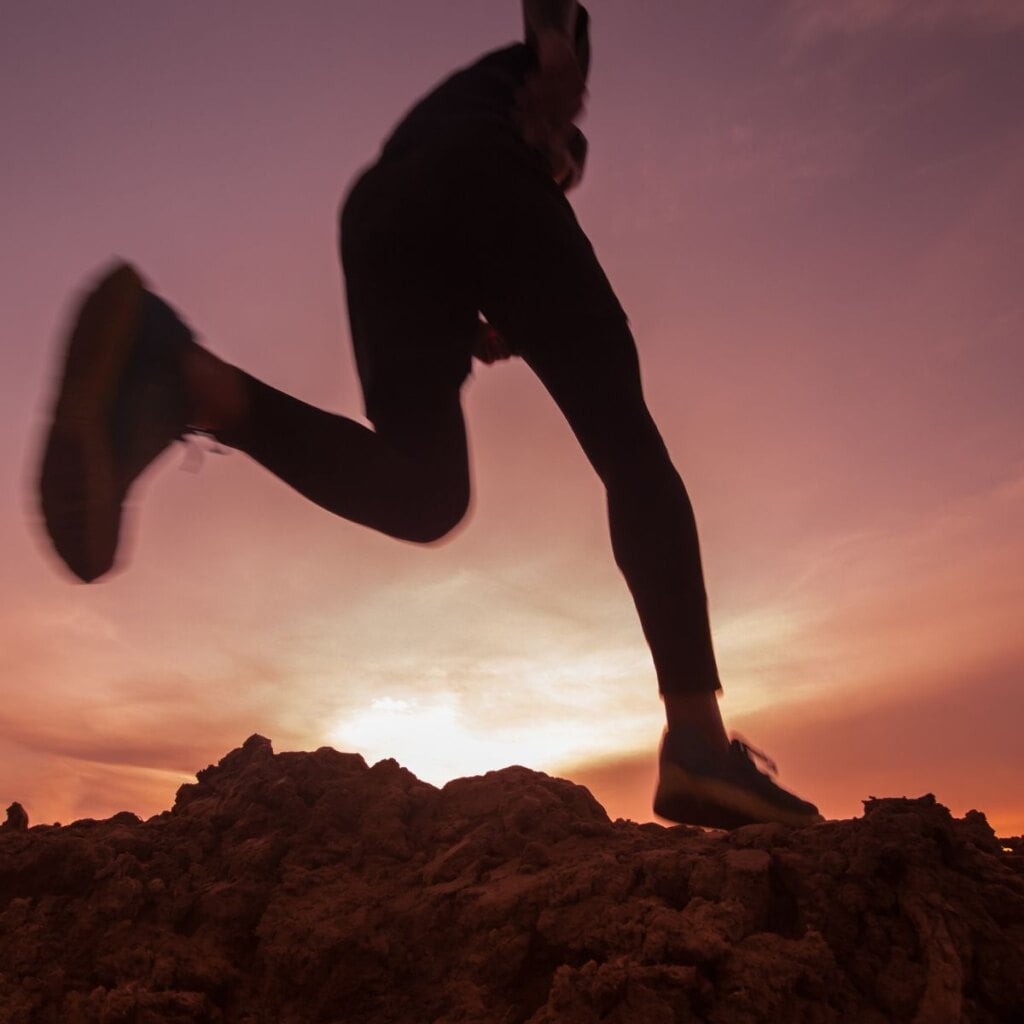Did you know that running can actually add years to your life? On average, running adds about three years to be exact! According to a research paper published in the National Library of Medicine, researchers found any amount of running no matter if it’s marathons or neighborhood jogs, builds better biological pathways in your cardiovascular fitness, lowered cholesterol, developed stronger bones, and increased positive neurological functioning. Running consistently has many mental and physical benefits. But when facing the concept of leaving the treadmill to attempt a trail run – it can be somewhat daunting. Even if you are a road seasoned runner you may find yourself in a rut not sure how to progress.

What is there to do in these situations? I mean, running should be fun! Running should bring enjoyment! Running should be enjoyable even if running, at times, can feel laborious. When you can get into the mindset of looking forward to running you will be helping yourself have a better and healthier life overall. So, what is there to do? Here are my tips to help you run better, run longer, and run with more pep in your stride!
Getting Started Trail Running
The hardest part about trail running in particular may actually be to motivate yourself to go outside for a run. The first run on a trail may feel laborious, or even painful to your body. You may experience feelings of frustration, as though you are slower than a snail as you tackle the outdoor environments. The idea of running three, two, or even one mile may seem ludicrously impossible. But the way to start trail running honestly is just to get yourself out the door and on a trail. That may be the hardest step.
Here is what to do to get over that hump. Start with short duration runs; really focusing on the time versus a distance goal. Aim to run two to four times a week max with your run durations ranging between 20 minutes to 30 minutes. Do not worry about mileage and focus more on your stride instead of your speed. Remember trail running a mile takes longer then running the same distance on a paved surface. Every second week try to slowly increase your mileage or your time duration. Make sure to do these increases slowly and within your comfort range. After all, this is a new sport you are attempting. Keep it fun and keep yourself from getting injured!
When picking your route, start with a relatively flat trail. For a while just getting comfortable with an easy trail is better than trying to tackle a steep elevation gain. As you get more strength, play with adding more elevation or try a trail that has rolling hills. You can begin to challenge yourself with more technical footing such as gravel or sand. If you stick with one route you can really start to feel comfortable with your run which will help boost confidence to go farther and faster.
What You Need For Trail Running
What are must haves for trail running? Here is a basic gear list to get started with:
A secret to better trail running is connected to how well you hydrate. There are a few different options for carrying your water when running.
- Amphipod Hydraform Minimalist Handheld Water Bottle: This 20oz bottle is simple in design with great functionality.
- Nathan SpeedView Insulated Flask with Phone Case: Not only can you get 18oz of water you also have a waterproof phone case.
- Nike 20oz Running Hydration Belt in Black: Don’t want to hold anything in your hands? This running belt can carry your bottles for you.
- Salomon Sensibelt: This chic design has a bottle as well as a small pouch for other essentials.
- Nathan Pinnacle Hydration Vest: Vests are super high performance and perfect for long runs. They can carry 4 liters of water as well as stuff pockets for jackets, gloves, keys, food and more.
Now that water is covered, making sure you are fueled up is important. It is recommended to get in around 100 calories with 30 grams of carbohydrates included every 45-60 minutes of running. The most convenient way of getting those calories in is through gels or chews.
- GU Energy Nutrition: Pick your favorite flavor from salted watermelon, campfire s’mores, caramel macchiato, and more! Each gel is 11oz with 100 calories of needed amino acids, sodium and caffeine for that energy kick.
- Honey Stinger: These organic waffles are tasty snacks for before or on your run. Each waffle is 150 calories of antioxidants and needed carbs. They even have gluten free options.
- Jelly Belly Extreme Sport Beans: These may be my favorite items for my sweet tooth. Each jelly bean tastes just like the classic version only these guys are packed with sodium, Vitamins B1, B2, B3 and C, plus essential electrolytes.
What To Wear
This may seem unneeded but how you dress can affect your trail run either positively or negatively. Let’s start with your shoe. If you are a seasoned road runner you may have a favorite trainer. Unfortunately, that shoe will not provide the best support on a trail. There are a wide range of trail shoes to choose from and knowing where you want to run and what type of terrain can really help narrow down the selection.
Trail shoes that are light in design are great if you mostly like to tackle short uphill runs. Mid-weight and reinforced shoes will really keep you going with foot protection on long runs on rocky and technical terrain. Now if you like short distances on changing terrain you will need trail running shoes that are heavy and extremely stable.
For beginner trail runners I recommend looking for just a solid all-purpose trail running shoe. This shoe should be able to transition well between various terrains as well as road running. Look for support but not too heavy with some ventilation.
Another thing to remember when dressing for your trail runs is the weather. Preparation is key for whatever conditions may come. When you start out on shorter runs you can pretty much guarantee the weather will be the same at the end as when you started. But as you slowly increase your miles and the time duration becomes hours, Mother Nature may decide to change. Storms can brew quickly at higher elevations and sunny, warm temperatures can become quite cold. A good thing to carry on your trail run is a light wind jacket. These jackets are not too heavy and easy to stuff in a pack or vest. A baseball cap or warm beanie are other great things to bring just in case the weather turns cold or rainy.
All The Extras
- Sometimes running in a group can help motivate you to run consistently. Think accountability partner! Many cities have local running groups you can join. Check out your local gear store to see what your location has to offer.
- Make sure you know your route! Unless you really want to add extra miles from getting lost. Having an app such as Alltrails can help keep you on track as well as find new trails to run. A great option as well is loading the run into your GPS watch. This way you can have turn by turn directions to keep you from making a wrong turn.
There are so many benefits to running. Better sleep, better immunity, reduction of cognitive decline and Alzheimer’s – plus adding the beauty of running outdoors. No matter how far, how fast, or how often you get out on a trail, I hope this guide helps inspire you to just run!
Happy adventures!
Related Articles

